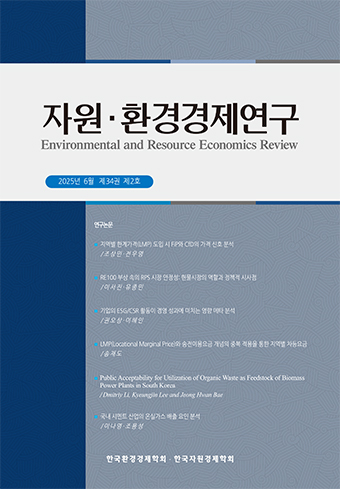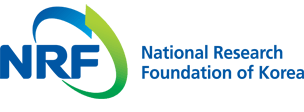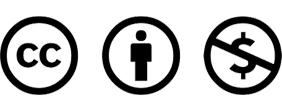Research Paper
Abstract
References
Information
In this paper, we quantify the socio-economic impacts of recycling from a carbon social benefit perspective based on a life cycle assessment and economic evaluation of the printed circuit board (PCB) recycling process for waste mobile phones. In particular, we compare the metal recovery process through PCB recycling of waste mobile phones with the traditional metal mining and smelting process, and analyze the change in carbon dioxide emissions under two electricity generation mixes in 2018 and 2030. The analysis shows that for both gold and copper, PCB recycling generates 6.86 times and 3.69 times more carbon dioxide than traditional mining and smelting, respectively. However, when the 2030 electricity generation mix is applied, the amount of carbon dioxide emitted in the recycling process decreases by 44.72% and 44.65% for copper and gold recovery, respectively. This is due to the nature of the recycling process, which uses electricity as the main energy source. A cost-benefit analysis that includes the social cost of carbon dioxide shows a B/C of 1.95, indicating that recycling is economically feasible. However, this result does not take into account both the problem of securing a sufficient amount of waste PCBs and the social cost of the pollutants emitted by the recycling process. Based on the results of this study, it is expected that cost-benefit analyses reflecting the social cost of carbon and carbon dioxide emissions through life cycle assessment of the recycling process will continue to be actively conducted not only for PCB waste recycling, but also for the circular economy and recycling processes that have recently attracted attention.
이 논문은 폐휴대전화의 인쇄회로기판(Printed Circuit Board, PCB) 재활용 공정에 대한 전과정평가(Life Cycle Assessment, LCA)와 경제성 평가를 통해, 탄소의 사회적 편익 관점에서 재활용의 사회‧경제적 효과를 정량화한다. 특히, 폐휴대전화의 PCB 재활용을 통한 금속 회수 공정과 전통적인 금속 채굴 및 제련 공정을 비교하고, 2018년과 2030년의 두 가지 발전 믹스를 적용하여 온실가스 배출량 변화를 분석하였다. 분석 결과, 금과 구리의 경우 전통적 채굴 및 제련 과정보다 PCB 재활용 과정에서 각각 6.86배, 3.69배 더 많은 온실가스가 발생한 것으로 나타났다. 그러나 2030년 발전 믹스를 적용할 경우, 재활용 공정에서 발생하는 온실가스 배출량은 구리와 금 회수에서 각각 44.72%, 44.65% 감소하는 것으로 분석되었다. 이는 전기를 주 에너지원으로 사용하는 재활용 공정의 특성에 따른 결과이다. 이산화탄소의 사회적 비용을 고려한 비용편익분석 결과, B/C값이 1.95로 나타나 재활용의 경제적 타당성이 크다는 점이 확인되었다. 그러나 이 결과는 충분한 규모의 폐 PCB 확보 문제와 재활용 공정에서 배출되는 오염물질의 사회적 비용이 모두 고려되지 않았다는 한계가 있다. 본 연구의 결과를 바탕으로, 앞으로 폐 PCB 재활용뿐만 아니라 최근 주목받고 있는 순환경제 및 재활용 공정에 대한 전과정평가를 통한 온실가스 배출량 분석과 탄소의 사회적 비용을 반영한 비용편익분석이 활발히 이어지기를 기대한다.
- 과학기술정보통신부, 「ICT주요품목동향조사」, 이동전화 휴대폰단말기 유형별 회선 수, 2023.
- 관계부처 합동, “탄소중립 녹색성장 추진전략”, 2022.
- 김강호‧김진수, “국제 광물가격 변화가 KOSPI 시가총액에 미치는 영향 분석”, 「한국자원공학회」, 제60권 제2호, 2023, pp. 88~98.
- 김민철‧장용철, “폐휴대폰의 경제적 가치 추정 및 비용-편익분석에 관한 연구”, 「한국폐기물자원순환학회지」, 제26권 제6호, 2009, pp. 580~585.
- 박승수‧정민욱‧김성민‧한성수‧정인상‧박지환‧박재구, “폐 정보통신기기(스마트폰, 노트북 PC)의 자원화 가치 분석”, 「자원리싸이클링」, 제27권 제3호, 2018, pp. 16~29.
- 산업통상자원부, “제5차 신‧재생에너지 기술개발 및 이용‧보급 기본계획”, 2020.
- 산업통상자원부, “제10차 전력수급기본계획(2022~2036)”, 2023.
- 산업통상자원부, “탄소 중립을 위한 한국형(K)-순환경제 이행계획 수립”, 2021, p. 16.
- 안혜란‧강이승‧이찬기, “국내 인쇄회로기판의 재활용 상용화 기술 및 연구동향 분석”, 「자원리싸이클링」, 제26권 제4호, 2017, pp. 9~18.
- 임재준‧김진수, “탄소의 사회적 비용에 따른 수상 태양광 사업의 경제성 변화”, 「신‧재생에너지」, 제20권 제1호, 2024, pp. 41~50.
- 정은미, “도시광산사업의 효율적 추진과 정책과제”, 「KIET 산업경제」, 2010년 5월호, pp. 15~26.
- 정진기‧이재천‧최준철, “폐휴대폰 내의 인쇄회로기판에 함유된 금속 성분의 변화”, 「자원리싸이클링」, 제24권 제3호, 2015, pp. 76~80. 10.7844/kirr.2015.24.3.76
- 컨슈머인사이트, “스마트폰, 두 배 올랐고 넉 달 더 쓴다”, 2020.12, p. 2.
- 한국전력공사, “한국전력통계 제88호”, 2018.
- 한국전자제품자원순환공제조합, “한국전자제품자원순환공제조합 2021년도 연감”, 2021, p. 16.
- 한국엔지니어링협회, “2022년도 엔지니어링업체 임금실태조사 보고서”, 2022, p. 3.
- 한국탄소산업진흥원 탄소복합재 LCA 홈페이지, https://www.kcarbon.or.kr/web/page.php?pcode=HE, 2024.8.30. 접속.
- 한정애 의원실, “환경부, 폐휴대전화 재활용률 낮아, 환경오염우려”, 한정애 의원실 보도자료, 2017.10.10.
- 환경부, 환경관리공단, “국가 온실가스 인벤토리 작성을 위한 2006 IPCC 가이드라인”, 2009.
- 허영채‧배대식‧오치영‧서영진‧이건모, “LCA 기법을 활용한 스마트폰의 잠재적 환경영향평가”, 「대한환경공학회지」, 제39권 제9호, 2017, pp. 527~533.
- Bian, J., H. Bai, W. Li, J. Yin, and H. Xu, “Comparative environmental life cycle assessment of waste mobile phone recycling in China,” Journal of Cleaner Production, Vol. 131, 2016, pp. 209~218. 10.1016/j.jclepro.2016.05.047
- Chen, W., Y. Geng, J. Hong, H. Dong, X. Cui, M. Sun, and Q. Zhang, “Life cycle assessment of gold production in China,” Journal of Cleaner Production, Vol. 179, 2018, pp. 143~150. 10.1016/j.jclepro.2018.01.114
- Cucchiella, F., I. D’Adamo, P. Rosa, and S. Terzi, “Automotive printed circuit boards recycling: an economic analysis,” Journal of Cleaner Production, Vol. 121, 2016, pp. 130~141. 10.1016/j.jclepro.2015.09.122
- Cucchiella, F., I. D’Adamo, S. L. Koh, and P. Rosa, “Recycling of WEEEs: An economic assessment of present and future e-waste streams,” Renewable and Sustainable Energy Reviews, Vol. 51, 2015, pp. 263~272. 10.1016/j.rser.2015.06.010
- Curran, M. A., Life Cycle Assesment: Principle and Practice, Scientific Applications International Corporation, 2006.
- Geyer, R. and V. Doctori Blass, “The economics of cell phone reuse and recycling,” The International Journal of Advanced Manufacturing Technology, Vol. 47, 2010, pp. 515~525. 10.1007/s00170-009-2228-z
- Hong, J., Y. Chen, J. Liu, X. Ma, C. Qi, and L. Ye, “Life cycle assessment of copper production: a case study in China,” Int J Life Cycle Assess, Vol. 23, 2018, pp. 1814~1824. 10.1007/s11367-017-1405-9
- Lee, J., H. Choi, and J. Kim, “Environmental and economic impacts of e-waste recycling: A systematic review,” Chemical Engineering Journal, Vol. 494, 2024, 152917. 10.1016/j.cej.2024.152917
- Ongondo, F. O., and I. D. Williams, “Mobile phone collection, reuse and recycling in the UK,” Waste Management, Vol. 31, Issue 6, 2011, pp. 1307~1315. 10.1016/j.wasman.2011.01.032
- Pokhrel, P., S. L. Lin, and C. T. Tsai, “Environmental and economic performance analysis of recycling waste printed circuit boards using life cycle assessment,” Journal of Environmental Management, Vol. 276, 2020. 10.1016/j.jenvman.2020.111276
- Soo, V. K., and M. Doolan, “Recycling Mobile Phone Impact on Life Cycle Assessment,” Procedia CIRP, Vol. 15, 2014, pp. 263~271. 10.1016/j.procir.2014.06.005
- Yao, L., T. Liu, X. Chen, M. Mahdi, and J. Ni, “An integrated method of life-cycle assessment and system dynamics for waste mobile phone management and recycling in China,” Journal of Cleaner Production, Vol. 187, 2018, pp. 852~862. 10.1016/j.jclepro.2018.03.195
- Publisher :Environmental and Resource Economics Review
- Publisher(Ko) :자원 · 환경경제연구
- Journal Title :자원·환경경제연구
- Journal Title(Ko) :Environmental and Resource Economics Review
- Volume : 33
- No :3
- Pages :263-289
- DOI :https://doi.org/10.15266/KEREA.2024.33.3.263



 자원·환경경제연구
자원·환경경제연구






